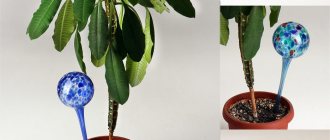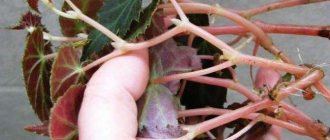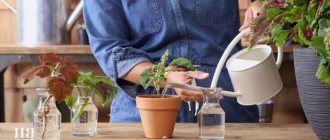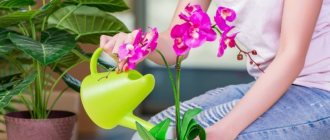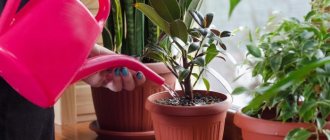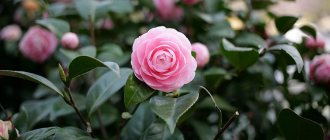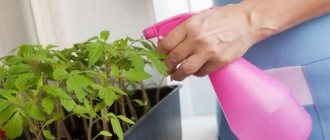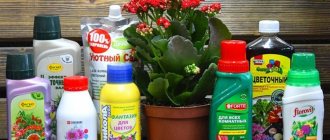Preparing house plants for a short trip
First of all, flowers need to be prepared for a long absence:
Avoid feeding 2 weeks before the expected time of departure. Since after fertilizing, flowers require more moisture to improve the absorption of minerals.- Reduce the usual amount of watering.
- Trim flowers and buds, inspect for the possibility of thinning the leaf mass. These measures will reduce water consumption.
- Move the flower to a shaded place where it will consume less water.
- Collect all the flowers in one place, this way you can increase the humidity in the room.
- On the day of departure, water the flowers generously.
- Place the clay pots in plastic ones and fill the space between them with a thick layer of wet expanded clay.
When going on vacation, it’s a good idea to give your flowers a hot shower, with a water temperature of 30 to 50 degrees. This event will strengthen their immunity, get rid of pests, and help them survive for a long time in extreme conditions.
How to determine how much water a particular flower needs?
We replant indoor plants every year. It turns out that some flowers are still small and sit in small pots, while others are planted in huge bowls. When watering, it is not necessary to take into account the age and size of the plant.
The amount of moisture should be proportionate, but keep in mind that the flower will take as much of it as it needs. I am not guided by the volume of liquid for a particular pot, but simply pour water in small portions, waiting for it to be absorbed, until it begins to flow into the pan from the drainage holes.
By the way, the plant will absorb moisture back in the first 10-15 minutes, so do not rush to pour it out. If after this period of time there is still water in the pan, drain it. By doing this, you will never overwater your flower. Do not forget that the water must first be settled for at least a day.
Simple and affordable ways to water while away
To ensure that your flowers receive the necessary moisture while you are away, you can organize homemade automatic watering systems for your home flowers, which will not require any special expenditure of money.
Using a plastic bottle
It will be enough to stock up only:
- plastic bottle;
- awl;
- scissors;
- a piece of gauze.
Step by step steps:
- We cut off the bottom of a plastic bottle and make a kind of funnel into which water will be poured.
- We make holes in the cork with an awl.
- We wrap the gauze around the neck of the bottle so that it fills the thread.
- Turn the bottle upside down and carefully insert it into the pot.
- We hang the bottle so that its lid touches the ground.
- Fill the bottle with water.
The number of plastic bottles should be equal to the number of flowers. For small pots you should take small bottles.
Using ropes
To water flowers this way, you should stock up on:
- a rope that will be used as a wick;
- plastic bottle;
- a peg to secure the rope in the pot.
Step by step steps:
- Place one end of the rope in a bottle of water.
- We fix the other end with a peg in the soil.
- Place a container of water above the plant pot.
If the plant is large, then the number of ropes can reach 5-7 pieces. Before installing the wick, you need to water the plants abundantly in advance, otherwise they will “drink” half of the water in a short period and there will not be enough moisture for the holiday period.
Hydrogel
Today there is a hydrogel on sale - a polymer that can absorb a large volume of water and slowly release moisture to plants; 2 g of hydrogel absorbs up to 500 ml of water.
Step by step steps:
- 2 weeks before the holiday, the flower is transplanted into a mixture of soil and hydrogel, at the rate of 2 g per 1000 g of substrate. In this case, it is important to evenly distribute the pieces of hydrogel in the soil so that there are no areas of land left without a backup water storage device.
- Carefully plant the flower in the mixture so as not to damage the root system.
- You can add hydrogel to an already planted flower by making small depressions in the soil for this purpose and pouring the hydrogel into the hole.
- Water the plant generously.
- If after watering a hydrogel is squeezed onto the surface, then it is necessary to sprinkle it with soil a couple of centimeters on top.
After 2-3 weeks, the root system of the flower will grow through the hydrogel capsules, from where it will be able to absorb moisture without waiting for the next watering. The hydrogel is a backup source of water that will prevent the plant from withering when there is no watering.
For the hydrogel to work, it is applied to the soil in the area in close proximity to the root system.
Bath
To preserve flowers during departure, you can use a bathtub or other container that can easily accommodate all your house plants.
Step by step steps:
- Pour a thick layer of expanded clay, at least 5 cm, onto the bottom of the container.
- We place flower pots close to each other on the bottom.
- Fill the expanded clay with a few centimeters of water.
- The gaps between the pots can be either sprinkled with damp expanded clay or damp moss.
The disadvantage of this method is that if at least one flower is affected by a pest, it can easily spread to other plants.
Before placing flower pots in the bath, you need to remove the trays from them. To prevent the root system of plants from freezing from contact with water, they should be in a bathtub covered with a layer of expanded clay.
Droppers
To water flowers this way we stock up:
- plastic bottle;
- rubber band;
- droppers according to the number of plants.
Step by step steps:
- Remove the needles from the tips of the droppers.
- We check the integrity of the tubes by blowing.
- We connect together, tying the ends of the droppers together with an elastic band so that they settle at the bottom of the container and do not float to its surface.
- We lower the droppers into the bottle.
- We raise the container as high as possible to organize pressure in the irrigation system.
- Open the dripper regulator to start water through the system.
- We stick the ends of the droppers into the ground.
- Use the wheel to adjust the required watering rate.
For the design to work, you need to make sure that the dropper tubes are not pinched.
Signs indicating a flooded plant
The first thing the leaves do is droop and the plant looks like it is starved of moisture. And he really misses her. With chronic overwatering, the soil in the pot becomes compacted, becomes swampy, and sour. In such soil, the roots cannot work normally, as they are deprived of oxygen.
As a result, moisture becomes inaccessible to the flower, although the substrate contains it in excess. This is such a paradox. Later other symptoms appear. The leaves first become faded, lose color, and later turn yellow and fall off. The stems soften and rot appears in the neck area. At this stage, the flower can no longer be saved. If you take it out of the ground, you can see that most of the roots have rotted.
Devices and devices for automatic watering on the market
If desired, you can purchase a ready-made model for automatic watering of flowers, which is capable of irrigating plants at a specified frequency. Moreover, it is possible to program the day and hour of watering.
Green Helper ODS 70
Fully automated drip irrigation system . Capable of simultaneously irrigating up to 24 plants in pots of different sizes. It is possible to program the amount of water for each plant, frequency and time of watering. No water connection required. Cost 3900 rubles.
Drops system
It is presented in the form of a dispenser plug, which is connected to a plastic bottle. The sharp end of the device is inserted into the pot. The system works by expanding air against the background of temperature changes.
Due to this, in hot weather there is an increase in the intensity of watering, and in cool weather - a decrease. Irrigation lasts for 20 days. The set contains 4 dispenser plugs. Cost – 630 rubles.
Foraworld 27 x 6 cm
The device is attached to a water bottle . It is possible to regulate the water supply. Includes 2 pieces. Cost – 1130 rubles.
For your information, there are “smart pots” on the market that can independently regulate the level of soil moisture; they come complete with a reservoir from which water flows to the root.
How to water indoor flowers during the holidays: do-it-yourself drip watering
Automatic watering of plants using a dripper is one of the unusual and interesting options. Suitable if you have several old containers from various IV solutions, such as saline. If you don't have them, you can use a regular plastic bottle.
Instructions:
- Take a tripod and hang several bottles on it. Now take a regular dropper system, one needle, stick it into a plastic bottle. Place the second part of the tube, removing the needle, directly into the pot.
- Before doing this, it is worth setting up the regulation of liquid ingress. The drip system is very convenient because you can speed up or slow down the flow of water into the pot. This is ideal if you are leaving for up to two weeks.
- Thus, there is no need to solder, tinker, or purchase anything from an electronics store. Because the drip system does everything on its own.
Plant dripper
What should you not do?
In order for flowers to survive their vacation in the most comfortable conditions for them, you should not do the following before leaving:
- Fertilize the plants for a month before departure.
- Leave flowers on the windowsill while you are away.
- Go on vacation without making any preparations.
- Leave flowers with buds and flowers that require more moisture to reach the root system.
- Close the curtains tightly, completely eliminating the flow of light. Otherwise, the flowers may die; they require moderate lighting.
- Leave flowers in a draft. Most plants are afraid of drafts and may die.
- Place the flower pot in a container of water. This can lead to rotting of the root system and death of the plant.
- Create a greenhouse effect by covering the top of the pot with plastic wrap, without ensuring a constant supply of water.
How to save a flooded flower?
You need to save the plant at the first sign of overwatering; if the roots are completely rotten, it is useless. Don't forget, a flooded plant looks just like it's lacking moisture. Try to remember how long ago you watered the flower, examine the soil in the pot. This will help pinpoint the cause.
How to proceed:
- If the soil is damp, the flower needs to be removed from the pot and the roots examined. The roots are still fine - you just need to dry the earthen ball. This can be done conveniently by wrapping it in a paper towel. Change the paper whenever it gets wet. The procedure must be repeated several times. However, you should not let it become completely dry; the soil should remain slightly moist. Then return the plant back to the pot.
- Alas, the roots darkened and became slippery. This means root rot has begun. Such areas need to be cut back to healthy tissue, and the sections should be sprinkled with crushed coal.
- The treated flower cannot be planted in the same soil. For it, a fresh substrate is used, pre-calcined in the oven. Plant the plant according to all the rules, laying a drainage layer.
- If the roots are severely damaged and a significant part of them has been cut off, you need to select a smaller planting container.
Pay attention and time to your plants, monitor their condition. It is easier to deal with any problem at the very beginning and flooding a flower is no exception. If there are a lot of plants, I recommend keeping a watering calendar for where you will be. It will make life much easier to select crops with the same soil moisture requirements. Did you overwater the flower? Immediately begin resuscitation measures before the roots rot.
Video
Watch the video on the topic of the article:
In the past, she was a successful lawyer who radically changed her lifestyle. In the new role of wife and mother, the ability to highlight the main thing and “put everything in order” has remained unchanged. I am always ready to share my discoveries and accumulated experience.
Found a mistake? Select the text with the mouse and click:
The habit of using an automatic washing machine “sparingly” can lead to the appearance of an unpleasant odor in it. Washing at temperatures below 60℃ and short rinses allow fungi and bacteria from dirty clothes to remain on internal surfaces and actively multiply.
The dishwasher cleans more than just plates and cups. You can load it with plastic toys, glass lamp shades and even dirty vegetables, such as potatoes, but only without using detergents.
Before removing various stains from clothing, you need to find out how safe the selected solvent is for the fabric itself. It is applied in a small amount to an inconspicuous area of the item from the inside out for 5-10 minutes. If the material retains its structure and color, you can move on to stains.
Stretch ceilings made of PVC film can withstand from 70 to 120 liters of water per 1 m2 of their area (depending on the size of the ceiling, the degree of its tension and the quality of the film). So you don’t have to worry about leaks from neighbors above.
The easiest way to remove scale and carbon deposits from the soleplate of the iron is with table salt. Pour a thick layer of salt onto the paper, heat the iron to maximum and run the iron over the salt bed several times, applying light pressure.
If your favorite things show the first signs of gestation in the form of untidy pellets, you can get rid of them using a special machine - a shaver. It quickly and effectively shaves off clumps of fabric fibers and returns things to their proper appearance.
Fresh lemon is not only suitable for tea: clean dirt from the surface of an acrylic bath by rubbing with half a cut citrus, or quickly wash the microwave by placing a container of water and lemon slices in it for 8-10 minutes at maximum power. The softened dirt can simply be wiped off with a sponge.
Threads made of gold and silver, which were used to embroider clothes in the old days, are called gimp. To obtain them, the metal wire was pulled for a long time with pliers to the required fineness. This is where the expression “to drag out the rigmarole” came from - “to do long, monotonous work” or “to delay the completion of a task.”
There are special traps to combat moths. The sticky layer with which they are covered contains female pheromones that attract males. By sticking to the trap, they are eliminated from the reproduction process, which leads to a decrease in the moth population.
Source
Use warm water whenever possible
This is especially important for heat-loving plants and with a shallow root system (tomatoes, cucumbers, peppers, eggplants). If there is no warm water, cold water should be poured in a small stream and only in the afternoon, over the soil around the plants (but not over the leaves or close to the root collar)
As the water passes through warm soil, it will heat up.
barrels for irrigation with warm water It is believed that rainwater is the most useful for irrigation. However, this is not so, because modern ecology leaves much to be desired.
If there has been no rain for a long time or peat bogs are burning, rainwater cannot be used for irrigation: washing away harmful impurities from the roof, such water is saturated with heavy metals, phenols, etc. Moreover, even if the rain is prolonged, it is better not to collect water in the first half hour - let the dust or soot be washed off the roofs first.
Need help from a friend
But perhaps the simplest, but at the same time the most effective way to ensure the care of plants during the holidays is to agree on this with a neighbor or trusted friend.
It's good if this person has the same experience in propagating plants as you, but if not, be sure to leave detailed instructions. It's best to label all pots, borders and even beds with numbers, and then give your assistant a notebook detailing the steps for each number. Or you can use any of the above methods and only ask a friend to come and monitor the irrigation system from time to time. And most importantly, don’t forget to promise a reward for work done responsibly!
Found a violation? Report content
Hotel for flowers
Similar services probably already exist in every major city. In small regional towns, you can also probably find people engaged in a similar business - sheltering flowers during the departure of their owners. Search through advertisements, on local forums, and place an advertisement yourself that you need such services. The main thing here is not to run into a person who knows little about plants. Otherwise, upon arrival, you will find that your pets will still have to be resuscitated, even after placing them in a plant hotel...
Irrigation systems are a topic!
If your budget allows, you can go the simple route and purchase any type of irrigation system at the flower market. The most convenient option would be a timer, which will provide all garden plants with the required amount of water at a predetermined time.
Lost weight: what Sofia Tarasova sacrificed for the sake of “VIA Gra” (new photos)
A student at the Vietnam Police Academy shared how she takes care of her facial skin.
A Brazilian travels 36 km by bike every day to take his loved one home.
This is the most expensive method, but it can help you relax if you are away for a long time and are worried that the methods at hand will not satisfy the needs of your plants.
